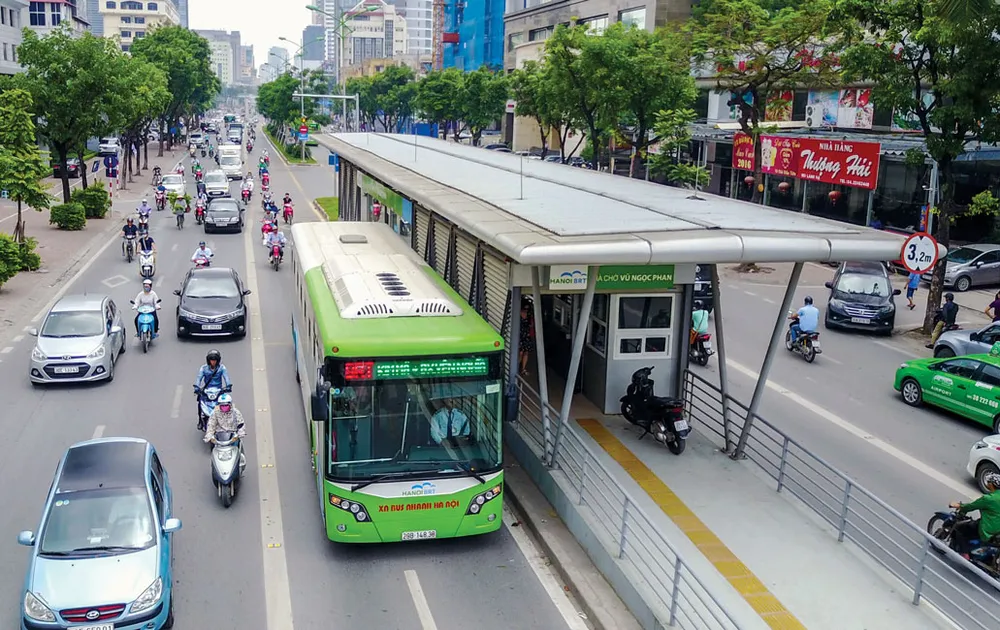
The BRT in Hanoi and Da Nang has been in operation for a few years but has failed. For it to succeed, it is to seen whether the Green Bus will be similar or different from the BRT.
People see benefits
Electric vehicles or low-emission fuel vehicles could be alternatives for the Green Bus. Even though the Green Bus is of higher quality than the BRT, with more beautiful, luxurious and modern interior, it is not a factor that draws passengers. This is because most people do not choose a car to go out, but choose a car to go make a living. Therefore, what they need is to get to the place they need to go, including narrow streets and alleyways, at affordable fare rates. Whether the car is beautiful or not, of high quality or worse, it is not more important than the benefits provided by the vehicle itself.
It may also be possible that the reason for the implementation of this new project is to take advantage of the IDA capital, which is the concessional loan from developed countries. If this is the main goal, we must see if the benefit is greater than the disadvantages of the BRT. If it is to run on a priority lane, it means that no vehicles are used other than the Green Bus. By increasing the width of the priority lane over a length of 26km from An Lac to Rach Chiec, the traffic area reserved for only this type of vehicle is disproportionately higher than for other types of vehicles. It has been proven by the experience of Hanoi after one month of dedicated BRT road, that the passenger capacity on the route is much lower than that of the shared road, causing congestion for other vehicles.
The goal of reducing the number of motorbikes with the Green Bus will probably be less effective because it is not the city people who criticize the old bus or are not used to taking the bus, but because buses do not fully meet the diverse travel needs of motorbikes such as cheap and fuel-efficient, compact and convenient, which can go into the smallest alleyways, even into crowded traditional markets. In other words, the city has two-thirds area under narrow roads and small alleyways, and the majority of residents earn a living by trading and small services, hence motorbikes are still much more practical compared to other means of transport. So whether it is the Green Bus, BRT, or Metro, there is no greater advantage seen in any of these.
Not feasible
If the Green Bus is always full of passengers, the overall traffic pressure of the whole city will not decrease significantly. The BRT in Hanoi and Da Nang failed because traffic infrastructure and vehicle density were big obstacles, and Ho Chi Minh City also stopped deploying the BRT lines along the Vo Van Kiet road. In recent years, traffic infrastructure and vehicle density in Ho Chi Minh City has not improved and the area for traffic still accounts for a low portion compared to the standards of modern urban areas. Therefore, the fact that the priority lane of the Green Bus occupies a larger area will make it more difficult for other vehicles to circulate.
From the above analysis and comparison, it can be seen that the Green Bus project does not have better advantages as compared to the unsuccessful BRT project, so the feasibility of the Green Bus project needs to be further studied and put in the overall traffic situation of Ho Chi Minh City. This is why it is necessary to follow the development of large scale public transport, because the city has two-thirds area under narrow streets and alleyways that cannot be accessed by large buses. Perhaps we should think more realistically on the basis of the current state of transport infrastructure and the economic activities of the majority of workers.
In fact, the solution to this problem was proposed many years ago. It is by diversifying the size of public transport vehicles in accordance with the traffic infrastructure of each area. Specifically, large buses are only suitable for wide roads, medium and small buses for narrow roads, and motorbikes are suitable for small alleyways. This is a natural adaptation and arrangement and creates many choices for people according to specific interest, needs and circumstances. At present, this solution needs to be based on the 4.0 technology for traffic regulation.
On the other hand, the traffic trend in smart cities in the world is also diverse in size of vehicles, even paying more attention to personal transportation, especially in the current Covid-19 situation that calls for social distancing. Large vehicles therefore cannot be promoted as being more advantageous compared to smaller and more practical sized vehicles.




















